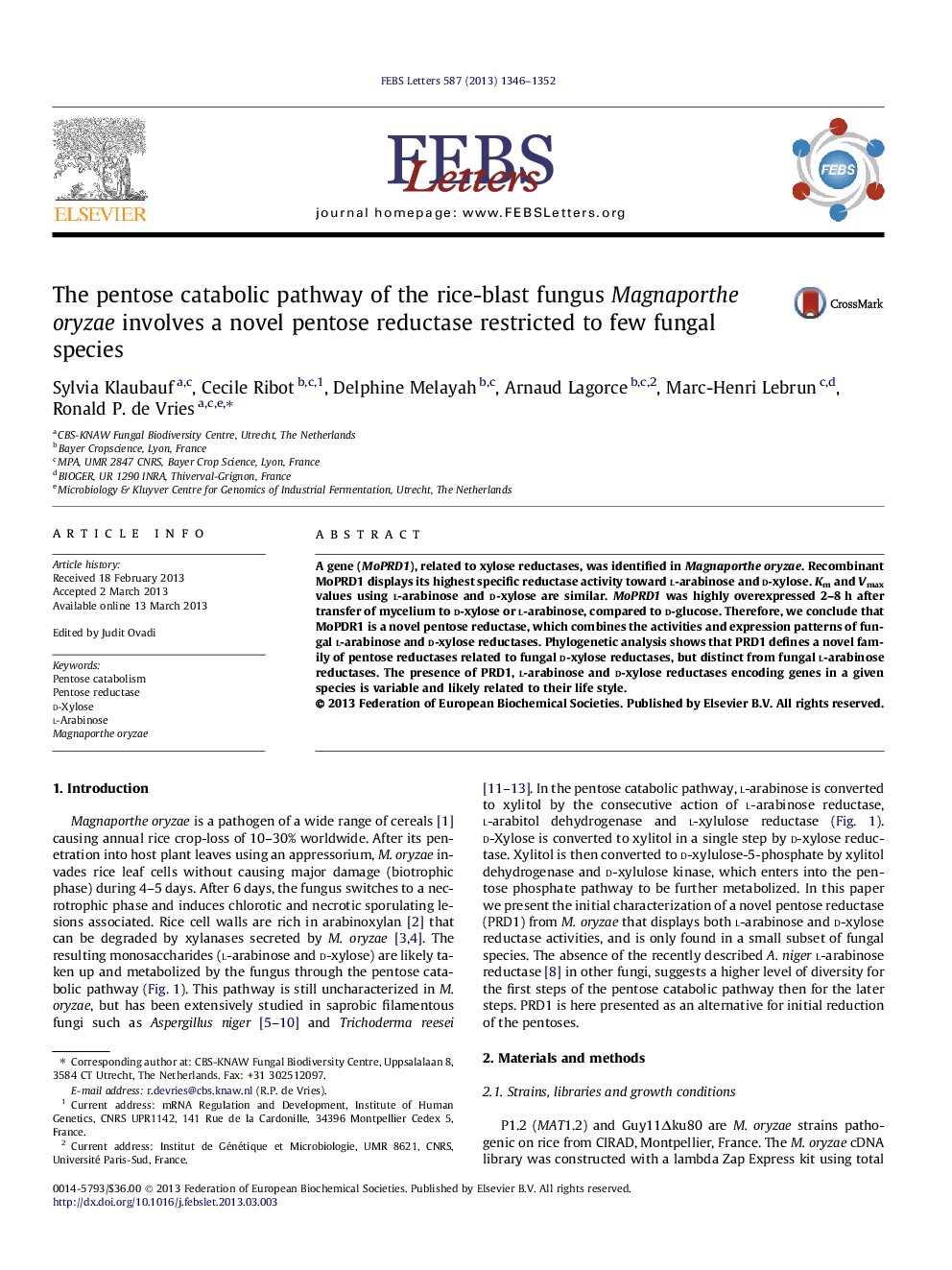| Article ID | Journal | Published Year | Pages | File Type |
|---|---|---|---|---|
| 2048041 | FEBS Letters | 2013 | 7 Pages |
•The Magnaporthe oryzae genome contains a novel pentose reductase (PRD1), but no l-arabinose reductase.•PRD1 has similar activity to l-arabinose and d-xylose.•PRD1 is only present in a subset of filamentous fungi.
A gene (MoPRD1), related to xylose reductases, was identified in Magnaporthe oryzae. Recombinant MoPRD1 displays its highest specific reductase activity toward l-arabinose and d-xylose. Km and Vmax values using l-arabinose and d-xylose are similar. MoPRD1 was highly overexpressed 2–8 h after transfer of mycelium to d-xylose or l-arabinose, compared to d-glucose. Therefore, we conclude that MoPDR1 is a novel pentose reductase, which combines the activities and expression patterns of fungal l-arabinose and d-xylose reductases. Phylogenetic analysis shows that PRD1 defines a novel family of pentose reductases related to fungal d-xylose reductases, but distinct from fungal l-arabinose reductases. The presence of PRD1, l-arabinose and d-xylose reductases encoding genes in a given species is variable and likely related to their life style.
